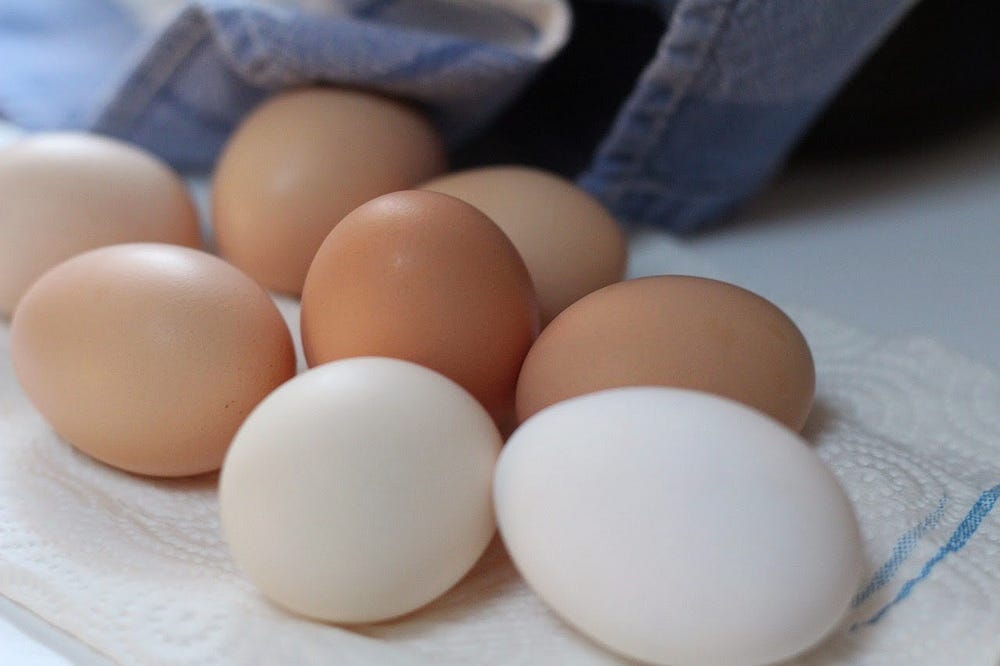It’s a common misconception that brown eggs are somehow better than white eggs. In fact, brown eggs aren’t any healthier than white eggs, but eggs, in general, are not all the same.
The color of an egg is dependent on what breed of hen a farm has. White eggs are usually laid by the leghorn hen breed, and brown eggs are laid by a breed related to the Rhode Island Red, but many different breeds can lay eggs. One way to tell what color egg a hen will lay is by checking out their earlobes. Yes, hens have earlobes. Chickens with white earlobes will lay white eggs, while pink or gray earlobe ones will lay brown, cream, or even blue eggs.
The biggest factor in the perceived difference between brown and white eggs is the chicken’s diet. What a chicken is fed determines the quality of the egg and what the color of the yolk will look like. Another factor is how fresh the egg is since it has been laid. No one wants to eat an egg that’s been sitting around. That doesn’t make for tasty eating. So if you want a good egg, just buy one from a chicken that’s had a happy life.
Other Egg Facts
The Araucana chicken of Chile lays blue eggs. The egg color is believed to occur due to a DNA retrovirus that happened at some time during the chicken’s domestication. They are not any healthier, or unhealthier, than regular eggs.
A hen can develop an egg in about 24 to 26 hours. When an egg is laid, a hen can begin developing a new egg within 30 minutes.
An average hen lays about 300 to 325 eggs a year.
The look of egg whites from an egg can give you an idea of how fresh the egg is. Egg whites that are cloudy are very fresh, while egg whites that are clear indicate an older egg. The cloudiness of the egg whites come about because of carbon dioxide being present in the egg. As the carbon dioxide escapes through the shell of the egg, the egg whites become more clear.
A chef’s hat, which is officially known as a toque, has pleats which equal the number of ways that a chef can cook an egg. This adage is well known in culinary circles, but it seems no one knows where or when it originated.


